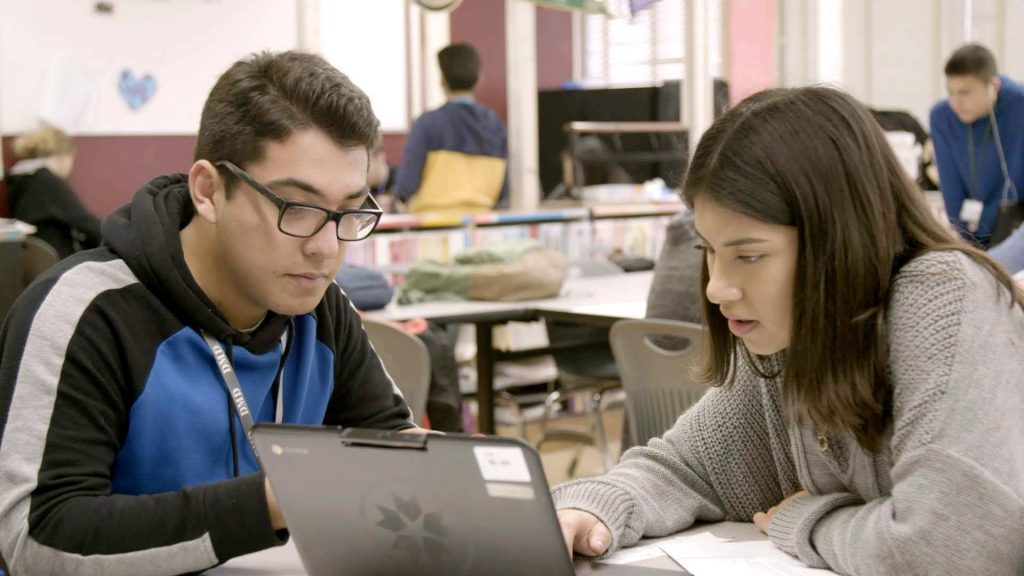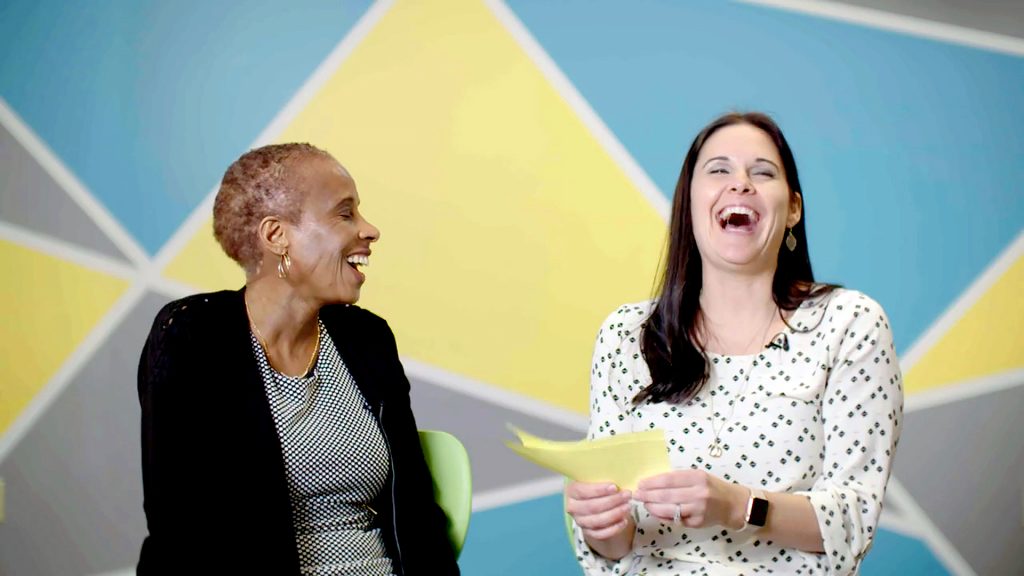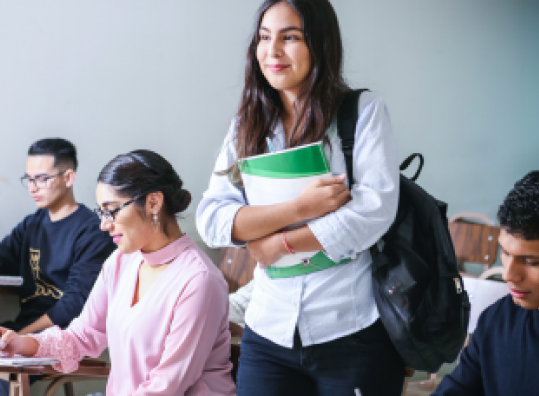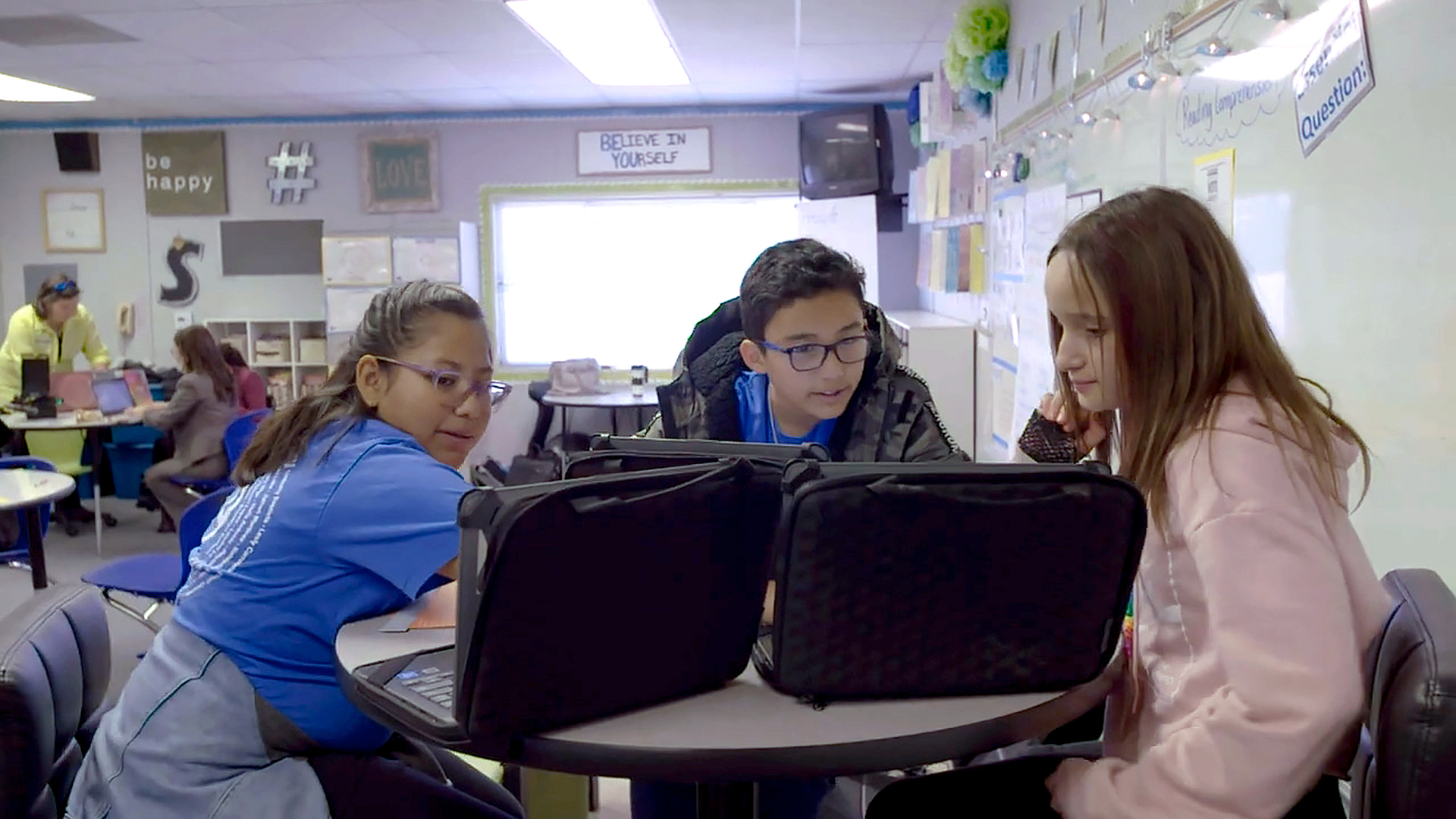Introduction
This case study summarizes how the Local Control Funding Formula (LCFF), California’s state school funding law since 2013, is being implemented in Pomona Unified School District (PUSD).
It focuses on the perspectives of various education stakeholders including students, teachers, parents, principals, school board members, and district staff to better understand how LCFF is being implemented to achieve the goal of advancing equity in the district. The goal of this case study is to inform educators and education system leaders about how district practices have changed as a result of LCFF and to better understand strategies for improving educational outcomes for historically underserved students.
PUSD has undertaken a series of actions under LCFF to improve academic outcomes for historically underserved students (e.g. low-income students, foster youth, English Learners). Early signs of progress resulting from PUSD’s efforts include improved levels of student achievement in schools implementing Positive Behavior Interventions and Supports (PBIS), a significant decrease in referral and suspension rates overall, and stronger English Language Arts (ELA) and Mathematics outcomes for students in the classrooms piloting a co-teaching model. While a number of ongoing fiscal and implementation challenges remain for Pomona as the district works towards executing its Pomona 2020 plan, it is clear that progress is being made.
Key Findings
- LCFF is being implemented as part of a comprehensive strategy to bring about equity and change. Both Positive Behavioral Interventions and Supports (PBIS) and teacher-led professional learning, the main areas of focus of this study, are efforts and initiatives that are being leveraged towards equitable and responsive schooling for students.
- Positive Behavioral Intervention and Supports are a key lever for change. The district’s senior leadership identified PBIS as a potential strategy to address school climate patterns that have historically marginalized low-income students of color (e.g., suspensions and identifying youth of color for special education services). Pomona started with a select number of PBIS schools, which today has grown to 27 school sites.
- Success is enabled by transition towards thinking about the whole child and a focus on social and emotional learning. While PBIS had historically focused on behavior and the social-emotional attributes of learning, there has been a progressive shift towards a whole-child practices approach that incorporates academic, behavioral, social, and emotional strategies utilized by all educators from bell to bell (e.g., student meditation, common behavior expectations across schools, physical environment, and positive classroom expectations).
- Strong school leadership teams have been essential for building sustainability, ownership, and improving student academic outcomes. All PBIS leadership teams include PBIS teacher coaches working alongside administrators. They work together to pursue common practices around improving student motivation and engagement and implementing alternatives to suspensions.
- There are early signs of progress for the district under LCFF.
- The number of Office Discipline Referrals across PBIS schools has decreased by 48 percent, and suspensions have decreased by 61 percent.
- In 2014–2015, students missed 460,000 minutes of learning time (1,278 days). In 2017–2018, referrals were reduced to 5,369, equalling 240,000 minutes (671 instructional days), resulting in an overall increase of 607 days of instructional time.
- Across the district, most of the schools that experienced gains in both their English Language Arts (82 percent) and Mathematics (87 percent) scores in PUSD were PBIS schools.
- Students in co-teaching classrooms are seeing greater gains in academic outcomes than their peers.
Pomona USD Video Interview Series
Quotes
When you learn from other teachers, and you hear their ideas, and you get to share with one another, I think that’s the best way that I learn because I’m not just taking in information from one person, I’m getting ideas that teachers are actually using in their classrooms. So it’s not just a “try this strategy,” but actually, we have a teacher who’s using this strategy…and we are working together, or they’re trying this and we’re seeing results from it.Teacher
Change is about much more: respect, responsibility, results, and relationships. Is it about the almighty test score or more about children connecting with adults and caring adults? We have to believe that students can do and will do. Not lowering the bars but raising the bars and then adjusting your practices so students could surpass that bar. To create spaces where social-emotional learning and relationships and trust as part of that are seen as an explicit avenue towards rigorous instruction.Superintendent Martinez

School Districts
1. Gather more detailed data on what teachers want and need to be successful. Districts often jump into designing professional learning strategies without taking inventory of current strategies by surveying teachers. Design a process and tools to assemble evidence on teachers’ professional learning profiles and needs and establish an array of tools and processes (e.g., virtual learning communities, professional learning modules, and micro-credentials) that accelerate outcomes.
2. Identify exemplar professional learning schools and turn them into learning labs. Models of quality professional learning are sometimes isolated within a department or school site. Invest more deeply in these exemplars, like Armstrong Elementary and Cortez Magnet, so they can have more time and resources to serve as laboratories of inspiration and learning with other district educators.
3. Carefully identify the root problems that get in the way of teachers spreading their expertise. Each school operates in a different context (student and community needs, teacher experiences, culture, etc.) and should engage in a learning process to become ready for teacher leadership and to help every educator learn in ways that suit their needs and those of their school.
4. Cultivate administrators who have the know-how to foster stronger teacher collaboration. A key ingredient in the emerging PUSD professional learning model is a cohort of site principals who enable expert teachers to share best practices and coach their peers in real time. These principals not only allow teacher leaders to be instructional leaders but they also proactively look for ways to tap these teachers to help drive learning experiences for all students across school sites. They know how to utilize the talents of their teams, and they learn alongside their teaching colleagues. Revisit and redesign administrator training for teacher leadership.

State
1. Support statewide, annual surveys about professional learning experiences to guide improvement. The ambitious goals of LCFF and a statewide system of support require exceptional coordination among educators, school sites, districts, and counties. However, there are very few formal channels for state policy to be informed by the perspectives of LCFF implementers: teachers. Funding under Title II and Title IV of the Every Student Succeeds Act (ESSA) can be used to develop feedback mechanisms to improve teaching and learning conditions, including school readiness for teacher leadership informed by recent research and innovative tools that can be used to measure progress.
2. Elevate promising models of teacher-led learning across the state under the statewide system of support. California has developed a robust statewide model of continuous improvement and efforts geared toward improving student learning in schools where students have historically struggled academically.1 However, nowhere in the levels of support is teacher-led learning identified as a promising model for improving student learning. It is implied that technical assistance for schools is necessary from outside the school system or from the district central office, but not from within the school system itself. Highlighting more examples of implementation strategies of teacher-led learning models like those emerging in PUSD could help improve the efficacy of the system of support and also ensure its sustainability for professional learning is not dependent on the expertise of outside entities.
3. Strengthen ideas of shared leadership and teacher-led learning in the California Administrator Performance Expectations (CAPE) and California Teaching Performance Expectations (CTPE) that identify a variety of roles for expert educators who can serve in more hybrid roles of leadership. Ideas around leadership are often narrowly tied to school site administrators and features of instructional leadership, management and learning environments, family and community engagement, ethics and integrity, and policy. Many teacher leaders already have strong influence around these areas of work, but they are not often recognized for both teaching and leading. The California Commission in Teacher Credentialing should explore innovative ways to recognize teachers who lead without leaving the classroom.
4. Expand California’s Instructional Leadership Corps (ILC) with a virtual learning community component. The ILC is a partnership between the Stanford Center for Opportunity Policy in Education (SCOPE), National Board Resource Center, and the California Teachers Association (CTA). This “teachers teaching teachers” model trains teacher leaders to lead ongoing professional learning around the state’s new math, science, and ELA standards within their own districts. A virtual learning component could assist districts like PUSD to spread teaching expertise and serve the unique professional learning needs of teachers.
Related Work






